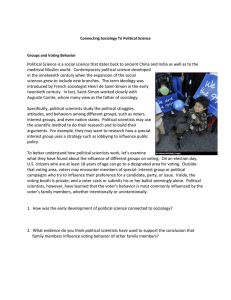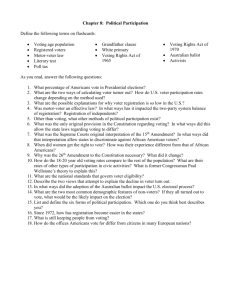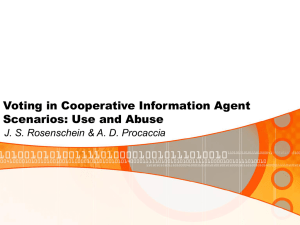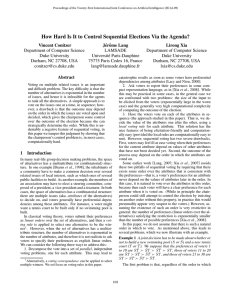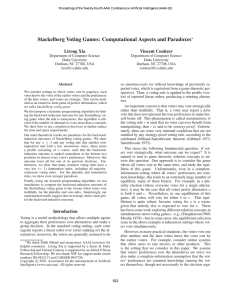Minority representation when multiple representatives are elected
advertisement
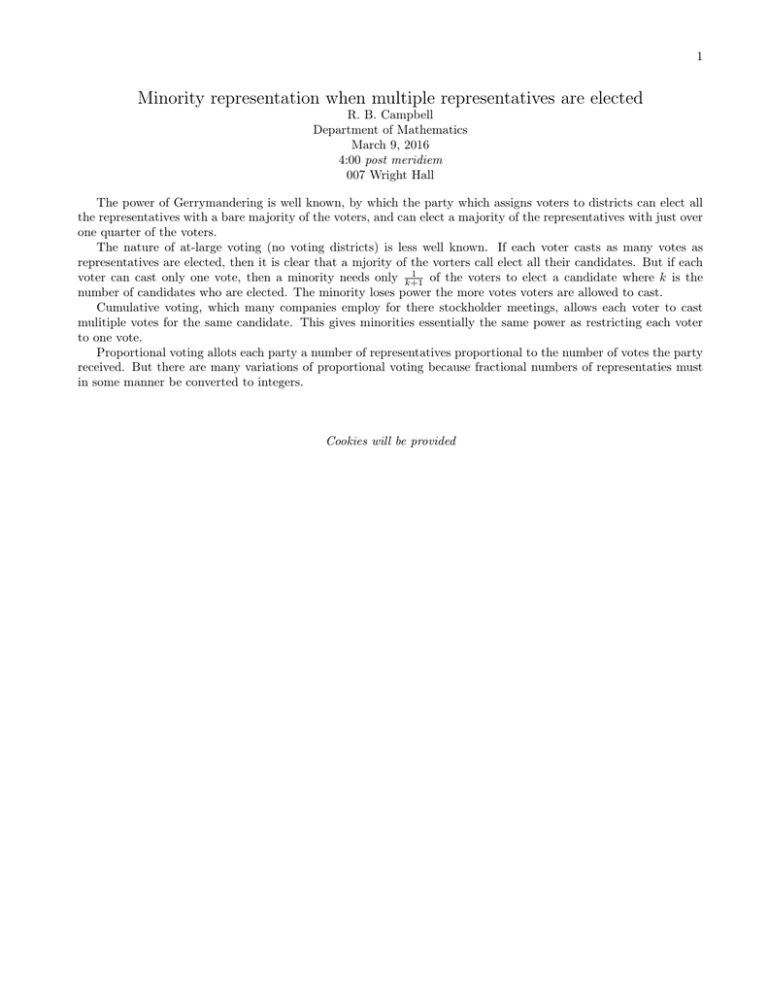
1 Minority representation when multiple representatives are elected R. B. Campbell Department of Mathematics March 9, 2016 4:00 post meridiem 007 Wright Hall The power of Gerrymandering is well known, by which the party which assigns voters to districts can elect all the representatives with a bare majority of the voters, and can elect a majority of the representatives with just over one quarter of the voters. The nature of at-large voting (no voting districts) is less well known. If each voter casts as many votes as representatives are elected, then it is clear that a mjority of the vorters call elect all their candidates. But if each 1 of the voters to elect a candidate where k is the voter can cast only one vote, then a minority needs only k+1 number of candidates who are elected. The minority loses power the more votes voters are allowed to cast. Cumulative voting, which many companies employ for there stockholder meetings, allows each voter to cast mulitiple votes for the same candidate. This gives minorities essentially the same power as restricting each voter to one vote. Proportional voting allots each party a number of representatives proportional to the number of votes the party received. But there are many variations of proportional voting because fractional numbers of representaties must in some manner be converted to integers. Cookies will be provided




